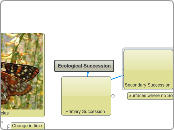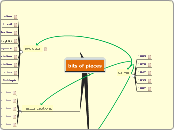af Wahab Bahar 8 år siden
1020
Diversity of Life Concept Map
Protista are primarily unicellular organisms with no specialized tissues, capable of being autotrophic or heterotrophic, and possess a nucleus. Porifera, such as sponges, are simple organisms with a stomach for digestion and flagellated cells to facilitate water flow.









